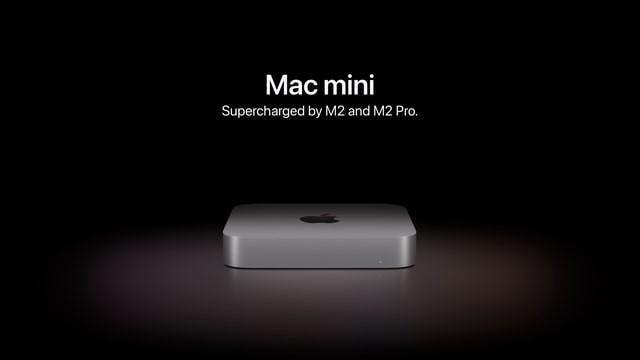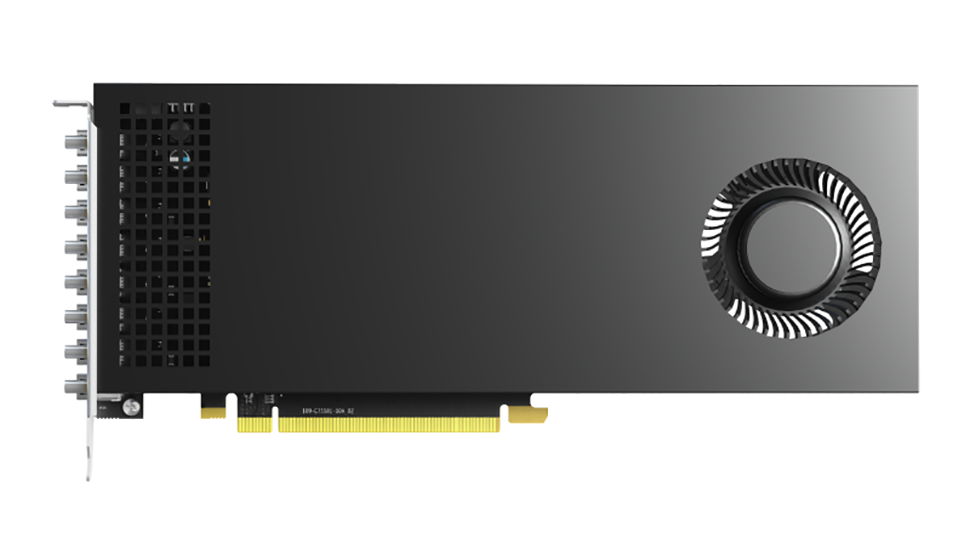My Architectural Choices and Practical Experience(1749941342160200)
As a computer science student nearing my senior year, I've been fascinated by the progression of software architecture. From monolithic designs to Service-Oriented Architecture (SOA), and now to the widely adopted microservices model, each evolution has sought to overcome contemporary challenges, advancing software engineering towards improved efficiency, flexibility, and reliability. In my academic and practical endeavors, microservices—with their benefits like independent deployment, technological variety, and elastic scalability—have made a strong impression on me. Yet, microservices are not a panacea; they introduce new complexities along with their advantages. Choosing a suitable framework to navigate this microservices environment has been a key focus of my recent explorations. Fortunately, I found a framework that I can only describe as a "stabilizing influence." Its distinctive design and remarkable performance have helped me avoid many common issues in my microservices journey. The Appeal and Challenges of Microservices: A Double-Edged Sword In conventional monolithic applications, all functional parts are contained within a single process. As businesses expand and teams grow, these applications often become cumbersome. A modification in one area can affect the entire system, and deployment and scaling become exceptionally difficult. Microservices architecture was developed to address these problems. It breaks down a large application into a set of small, independent services, each focused on specific business functions and capable of separate development, deployment, and scaling. This "divide and conquer" approach offers several advantages: Technological Variety: Each microservice can use the technology stack best suited for its particular business requirements, without being limited by other services. Independent Deployment and Scaling: Services with high loads can be scaled independently, eliminating the need to scale the entire application. Introducing and rolling back new features also becomes more agile. Team Autonomy: Small, dedicated teams can manage one or more microservices independently, boosting development speed and team morale. Fault Isolation: The failure of a single service does not necessarily cause the entire system to crash, enhancing overall system resilience. However, like any method, microservices come with their own set of challenges: Complexity of Distributed Systems: Communication between services, data consistency, distributed transactions, service discovery, and governance all become critical factors. Increased Operational Demands: Managing and monitoring numerous independent services requires more sophisticated automated operational tools. Interface Contracts and Version Control: Dependencies between services must be managed through clear interface contracts, and handling interface changes and versions becomes more complex. Increased Testing Difficulty: End-to-end integration testing necessitates coordinating multiple services, and setting up and maintaining test environments is more demanding. As a student with a strong interest in structural integrity, I recognize that an effective microservices framework must actively assist developers in tackling these challenges, rather than just providing basic HTTP service functionality. Framework Selection: Why This "Stabilizing Influence" in the Microservices Wave? Among the mainstream web frameworks I've encountered, some, despite their power and mature ecosystems, can feel somewhat "cumbersome" or ill-suited for microservice scenarios. They might have slow startup times, high resource usage, or lack robust, convenient native support for inter-service communication, circuit breaking, and link tracing. It wasn't until I discovered this "intriguing" Rust-based framework that my viewpoint changed. Extreme Lightweightness and High Performance: The Ideal Microservices Base Microservices emphasize being "small and focused"; each service should be as lightweight as possible. This framework, with its remarkably low resource consumption (memory, CPU) and quick startup speed, perfectly aligns with this core microservices principle. Under identical hardware conditions, it can host more service instances or perform more effectively in resource-limited environments (like containers or edge computing nodes). Its underlying architecture, built on Rust and Tokio, ensures outstanding performance and minimal latency even in high-concurrency situations, which is crucial for microservice systems reliant on frequent inter-service calls. I once experimented with building simple user and order services using this framework, communicating via RPC (Remote Procedure Call). Even when simulating a high volume of concurrent requests, inter-service call latency consistently stayed in the millisecond range, and the overall system throughput significantly exceeded versions I had previously implemented with dynamic language frameworks. Th

As a computer science student nearing my senior year, I've been fascinated by the progression of software architecture. From monolithic designs to Service-Oriented Architecture (SOA), and now to the widely adopted microservices model, each evolution has sought to overcome contemporary challenges, advancing software engineering towards improved efficiency, flexibility, and reliability. In my academic and practical endeavors, microservices—with their benefits like independent deployment, technological variety, and elastic scalability—have made a strong impression on me. Yet, microservices are not a panacea; they introduce new complexities along with their advantages. Choosing a suitable framework to navigate this microservices environment has been a key focus of my recent explorations. Fortunately, I found a framework that I can only describe as a "stabilizing influence." Its distinctive design and remarkable performance have helped me avoid many common issues in my microservices journey.
The Appeal and Challenges of Microservices: A Double-Edged Sword
In conventional monolithic applications, all functional parts are contained within a single process. As businesses expand and teams grow, these applications often become cumbersome. A modification in one area can affect the entire system, and deployment and scaling become exceptionally difficult. Microservices architecture was developed to address these problems. It breaks down a large application into a set of small, independent services, each focused on specific business functions and capable of separate development, deployment, and scaling. This "divide and conquer" approach offers several advantages:
- Technological Variety: Each microservice can use the technology stack best suited for its particular business requirements, without being limited by other services.
- Independent Deployment and Scaling: Services with high loads can be scaled independently, eliminating the need to scale the entire application. Introducing and rolling back new features also becomes more agile.
- Team Autonomy: Small, dedicated teams can manage one or more microservices independently, boosting development speed and team morale.
- Fault Isolation: The failure of a single service does not necessarily cause the entire system to crash, enhancing overall system resilience.
However, like any method, microservices come with their own set of challenges:
- Complexity of Distributed Systems: Communication between services, data consistency, distributed transactions, service discovery, and governance all become critical factors.
- Increased Operational Demands: Managing and monitoring numerous independent services requires more sophisticated automated operational tools.
- Interface Contracts and Version Control: Dependencies between services must be managed through clear interface contracts, and handling interface changes and versions becomes more complex.
- Increased Testing Difficulty: End-to-end integration testing necessitates coordinating multiple services, and setting up and maintaining test environments is more demanding.
As a student with a strong interest in structural integrity, I recognize that an effective microservices framework must actively assist developers in tackling these challenges, rather than just providing basic HTTP service functionality.
Framework Selection: Why This "Stabilizing Influence" in the Microservices Wave?
Among the mainstream web frameworks I've encountered, some, despite their power and mature ecosystems, can feel somewhat "cumbersome" or ill-suited for microservice scenarios. They might have slow startup times, high resource usage, or lack robust, convenient native support for inter-service communication, circuit breaking, and link tracing. It wasn't until I discovered this "intriguing" Rust-based framework that my viewpoint changed.
Extreme Lightweightness and High Performance: The Ideal Microservices Base
Microservices emphasize being "small and focused"; each service should be as lightweight as possible. This framework, with its remarkably low resource consumption (memory, CPU) and quick startup speed, perfectly aligns with this core microservices principle. Under identical hardware conditions, it can host more service instances or perform more effectively in resource-limited environments (like containers or edge computing nodes). Its underlying architecture, built on Rust and Tokio, ensures outstanding performance and minimal latency even in high-concurrency situations, which is crucial for microservice systems reliant on frequent inter-service calls.
I once experimented with building simple user and order services using this framework, communicating via RPC (Remote Procedure Call). Even when simulating a high volume of concurrent requests, inter-service call latency consistently stayed in the millisecond range, and the overall system throughput significantly exceeded versions I had previously implemented with dynamic language frameworks. This performance benefit highlighted the importance of choosing the right technology stack.Powerful Asynchronous Processing: Effectively Handling Network I/O
In a microservices architecture, network communication is constant. Every inter-service call involves network I/O. If a framework's asynchronous processing capabilities are weak, it can easily lead to thread blockage while waiting for network responses, causing a sharp drop in system throughput. This framework deeply integrates the Tokio asynchronous runtime, providing comprehensive asynchronous support from the foundational layer to the application layer. Whether handling external HTTP requests, making internal RPC calls, or interacting with external systems like databases and message queues, it all happens efficiently in a non-blocking manner. Developers can easily write concise, efficient asynchronous code without dealing with complex thread management or callback issues.
This robust asynchronous capability allows the framework to support a massive number of concurrent connections and requests with minimal thread resources, an essential feature for building highly available, high-concurrency microservice systems.Concise and User-Friendly Inter-Service Communication Tools
While HTTP/REST is a common method for inter-service communication in microservices, RPC (such as gRPC or Thrift) can be a better option in scenarios requiring extreme performance and efficiency. This framework, while its core may focus more on HTTP services, can easily integrate various RPC frameworks (or provide lightweight custom RPC solutions) thanks to the powerful Rust ecosystem and its own excellent extensibility. I observed that its design philosophy emphasizes modularity and pluggability, allowing developers to flexibly choose the most suitable inter-service communication method based on their needs.
More importantly, the framework's macro system and metaprogramming capabilities can significantly simplify the definition of service interfaces and the generation of calling code. For instance, through simple interface definitions, the framework might automatically generate client stubs and server skeletons, abstracting away underlying communication details and enabling developers to make remote service calls as if they were local function calls. This convenience is vital for enhancing microservice development efficiency.Native Observability Support (Logging, Tracing, Metrics)
In complex microservice systems, quickly identifying fault points and analyzing performance bottlenecks when issues arise is a significant challenge. Observability—comprising Logging, Tracing, and Metrics—is key to addressing this. An excellent microservices framework must offer robust native support for observability.
I learned that this framework's ecosystem includes dedicated logging libraries (likehyperlane-log), supporting advanced features such as structured logging, asynchronous logging, and log rotation. This provides a solid foundation for recording detailed runtime information and troubleshooting problems.
In terms of link tracing, while the framework itself might not directly provide a complete distributed tracing system, its clear request processing flow and middleware mechanism make it relatively easy to integrate mainstream tracing systems like OpenTelemetry, Jaeger, or Zipkin. By injecting trace context at key nodes of service calls, we can clearly map the complete call chain of a request across various microservices, thereby quickly locating performance bottlenecks and fault points.
Regarding metrics, the framework can conveniently expose key runtime metrics (such as request count, response time, error rate, resource usage) and integrate with monitoring systems like Prometheus and Grafana for real-time monitoring and alerting of service status.
This emphasis on observability reflects the framework designers' deep understanding of modern distributed system operational practices.Error Handling and Fault Tolerance Mechanisms
In distributed environments, issues like network jitter, service downtime, and dependency service timeouts are common. Microservice systems must possess robust fault tolerance capabilities to ensure overall availability. This framework, leveraging Rust's powerful error handling mechanisms (such asResultandOptiontypes, and the?operator), enables developers to write more resilient code that is easier to manage errors with.
Simultaneously, its flexible middleware architecture facilitates the implementation of various fault tolerance patterns (such as timeout control, retry mechanisms, circuit breakers, bulkhead isolation, rate limiting, and degradation). Developers can choose or customize appropriate middleware based on business needs to enhance service resilience. For example, when a downstream service fails, a circuit breaker can quickly cut off calls to it, preventing cascading failures, and return a predefined fallback response, ensuring the availability of core functions.
Practical Application: Building a Microservice Backend for a Campus Application
To more deeply experience this framework's capabilities in a microservice context, I attempted to refactor a previous monolithic campus forum application into a microservice architecture. I broke it down into several core modules: user service, post service, comment service, and notification service.
- User Service: Manages user registration, login, and information.
- Post Service: Handles publishing, querying, modifying, and deleting posts.
- Comment Service: Manages comments and replies to posts.
- Notification Service: Sends real-time notifications to users (potentially via WebSocket or SSE) for new replies or likes.
When selecting the framework, I unhesitatingly chose this "intriguing" Rust framework as the foundation for all microservices. During development, I profoundly experienced its many advantages:
- Development Efficiency: Despite it being my first time using it in a microservice project, I quickly became proficient thanks to its concise API and powerful macros. Defining service interfaces, handling HTTP requests, and making inter-service calls were all very smooth. Compared to my previous experiences with other languages and frameworks, the code volume was significantly reduced, and the logic became clearer.
- Performance: During local integration testing, the entire system's response speed was very fast. Even when simulating high concurrent user access, the CPU and memory usage of each service remained at a low level. This gave me great confidence in its future online performance.
- Resource Consumption: Since each service was very lightweight, I could easily run all service instances simultaneously on my laptop for debugging without experiencing lag.
- Error Troubleshooting: Through integrated structured logging and simple link tracing (I manually passed request IDs during service calls), I could relatively quickly locate the specific service and code location when problems occurred.
Of course, I also encountered some challenges during practice, such as how to handle distributed transactions more elegantly (I eventually opted for an eventual consistency solution with compensation via a message queue) and how to build a more complete automated testing and deployment pipeline. However, these were more due to the inherent complexity of microservice architecture itself rather than issues with the framework. On the contrary, this framework, with its strong foundational capabilities, provided powerful support for me to solve these problems.
Comparative Reflection: Why Is It More Suited for Microservices?
Compared to some traditional Java Spring Cloud or Go microservice frameworks, this Rust-based framework has natural advantages in performance, resource efficiency, and memory safety. While the Spring Cloud ecosystem is vast and mature, its JVM startup speed and memory footprint can sometimes be a burden for microservices striving for extreme lightweightness. Go performs excellently in concurrent processing and deployment convenience, but Rust surpasses it in memory safety and expressiveness.
More importantly, this framework's design philosophy seems more modern and forward-looking. It doesn't carry excessive historical baggage and can fully leverage the latest features of the Rust language and the Tokio ecosystem, providing developers with a purer, more efficient microservice development experience. It encourages you to build truly "small and focused" services, rather than simply migrating the complexity of the monolithic era into a distributed environment.
Conclusion: The Ideal Tool for Navigating the Microservices Wave
Microservice architecture is undoubtedly a major trend in today's software development landscape. It provides a powerful paradigm for building complex, scalable, and highly available application systems. However, to truly master this wave, choosing a suitable development framework is crucial.
In my view, this "intriguing" Rust framework, with its extreme performance, lightweight characteristics, powerful asynchronous processing capabilities, robust support for observability, and elegant development experience, is undoubtedly one of the ideal choices for building modern microservice applications. It's like a sturdy yet agile speedboat, helping developers ride the waves in the microservices ocean and calmly face various challenges.
As a newcomer about to enter the industry, I feel very fortunate to have encountered and deeply studied such an excellent framework. It has not only broadened my technical horizons but also filled me with anticipation for the future of microservice architecture. I believe that as the Rust language becomes increasingly popular and this framework's ecosystem continues to improve, it will surely shine brightly in the microservices field, becoming the "stabilizing influence" in the hands of more and more developers.















































































































































































![[The AI Show Episode 152]: ChatGPT Connectors, AI-Human Relationships, New AI Job Data, OpenAI Court-Ordered to Keep ChatGPT Logs & WPP’s Large Marketing Model](https://www.marketingaiinstitute.com/hubfs/ep%20152%20cover.png)





































































































![Designing a Robust Modular Hardware-Oriented Application in C++ [closed]](https://i.sstatic.net/f2sQd76t.webp)














![[DEALS] Internxt Cloud Storage Lifetime Subscription: 10TB Plan (87% off) & Other Deals Up To 98% Off – Offers End Soon!](https://www.javacodegeeks.com/wp-content/uploads/2012/12/jcg-logo.jpg)





















































.jpg?width=1920&height=1920&fit=bounds&quality=70&format=jpg&auto=webp#)




















































































_Andreas_Prott_Alamy.jpg?width=1280&auto=webp&quality=80&disable=upscale#)

_designer491_Alamy.jpg?width=1280&auto=webp&quality=80&disable=upscale#)



































































































![Google Play Store not showing Android system app updates [U]](https://i0.wp.com/9to5google.com/wp-content/uploads/sites/4/2021/08/google-play-store-material-you.jpeg?resize=1200%2C628&quality=82&strip=all&ssl=1)





















































































